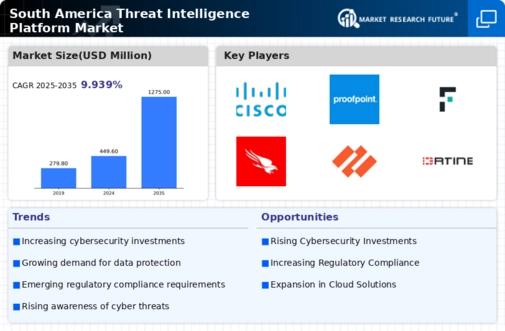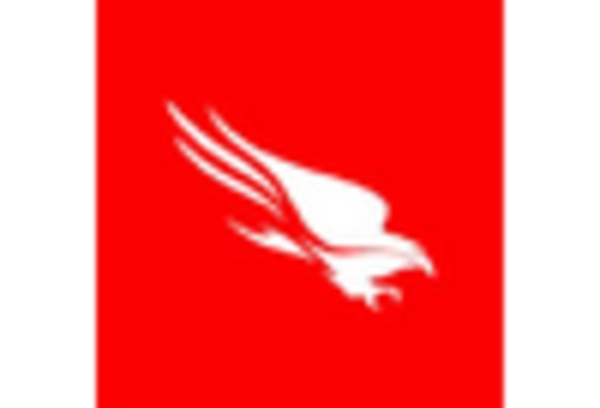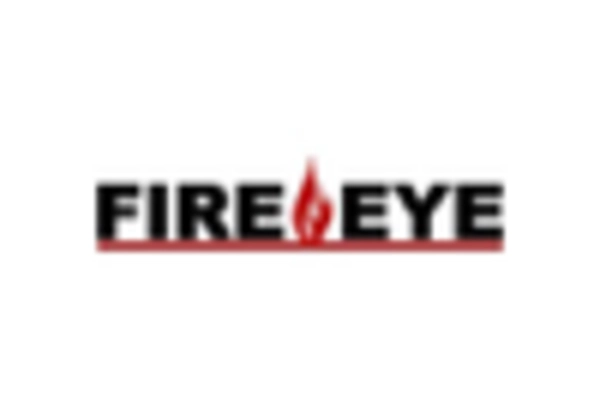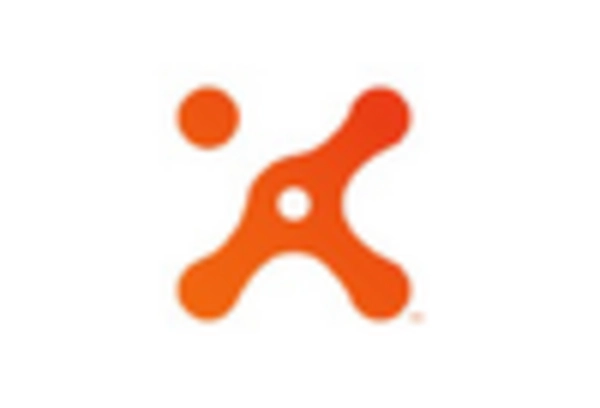The threat intelligence-platform market is currently characterized by a dynamic competitive landscape, driven by increasing cyber threats and the growing need for advanced security solutions. Key players such as Recorded Future (US), FireEye (US), and CrowdStrike (US) are strategically positioned to leverage their technological innovations and extensive threat data to enhance their offerings. Recorded Future (US) focuses on integrating machine learning capabilities into its platform, which allows for real-time threat detection and analysis. FireEye (US), on the other hand, emphasizes its incident response services, which complement its threat intelligence solutions, thereby creating a comprehensive security ecosystem. CrowdStrike (US) is notable for its cloud-native architecture, which facilitates rapid deployment and scalability, appealing to organizations seeking agile security solutions. Collectively, these strategies not only enhance their competitive edge but also shape the market dynamics by pushing for higher standards in threat intelligence capabilities.
In terms of business tactics, companies are increasingly localizing their operations to better serve regional markets, optimizing supply chains to enhance efficiency, and investing in partnerships to expand their reach. The competitive structure of the market appears moderately fragmented, with several players vying for market share while also collaborating through strategic alliances. This collective influence of key players fosters an environment where innovation and responsiveness to market needs are paramount.
In October 2025, Recorded Future (US) announced a partnership with a leading South American telecommunications provider to enhance threat intelligence sharing across the region. This collaboration is strategically significant as it not only broadens Recorded Future's footprint in South America but also facilitates improved threat detection capabilities for local enterprises, thereby addressing specific regional security challenges.
In September 2025, FireEye (US) launched a new suite of threat intelligence tools tailored for small and medium-sized enterprises (SMEs) in South America. This move is particularly important as it reflects FireEye's commitment to democratizing access to advanced security solutions, allowing SMEs to better protect themselves against increasingly sophisticated cyber threats. By focusing on this underserved market segment, FireEye positions itself as a leader in providing accessible threat intelligence solutions.
In August 2025, CrowdStrike (US) expanded its operations in Brazil by opening a new regional office aimed at enhancing customer support and engagement. This strategic expansion underscores CrowdStrike's recognition of Brazil as a key market within South America, where the demand for robust cybersecurity solutions is rapidly increasing. By establishing a local presence, CrowdStrike can better tailor its offerings to meet the unique needs of Brazilian organizations.
As of November 2025, the competitive trends in the threat intelligence-platform market are increasingly defined by digitalization, AI integration, and a focus on sustainability. Strategic alliances are becoming more prevalent, as companies recognize the value of collaboration in enhancing their service offerings and market reach. Looking ahead, competitive differentiation is likely to evolve from traditional price-based competition towards a greater emphasis on innovation, technological advancements, and the reliability of supply chains. This shift suggests that companies that prioritize these aspects will be better positioned to thrive in an increasingly complex and competitive landscape.

















Leave a Comment